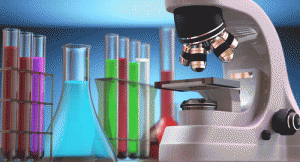 Interleukin 17-producing helper T cells (Th17 cells) secrete copious amounts of interleukin 26 (IL-26) in patients with such autoimmune diseases as rheumatoid arthritis, psoriasis and inflammatory bowel disease. Although investigators know that IL-26 levels correlate with Th17-mediated autoimmune disease, they still don’t understand how IL-26 expression by Th17 is regulated. It’s also known that high concentrations of IL-26 are capable of directly killing normal human cells in vitro.
Interleukin 17-producing helper T cells (Th17 cells) secrete copious amounts of interleukin 26 (IL-26) in patients with such autoimmune diseases as rheumatoid arthritis, psoriasis and inflammatory bowel disease. Although investigators know that IL-26 levels correlate with Th17-mediated autoimmune disease, they still don’t understand how IL-26 expression by Th17 is regulated. It’s also known that high concentrations of IL-26 are capable of directly killing normal human cells in vitro.
Stephan Meller, PhD, a postdoctoral fellow at the University of Texas MD Anderson Cancer Center in Houston, and colleagues investigated the pro-inflammatory role of IL-26 and published their results in the September 2015 issue of Nature Immunology. They report that IL-26 produced by Th17 cells not only has direct antimicrobial activity, but also triggers the expression of Type I interferon, thereby driving a potent immune response.
The researchers began their investigation by sequencing IL-26, which revealed a molecule with an unusually high positive charge (+18.1) at pH 7. Moreover, they found that IL-26 formed dimers, as well as higher-degree multimers. The potential clustering of cationic charges led the investigators to hypothesize that IL-26 had antimicrobial properties.
“Our findings demonstrate an unexpected function of the human cytokine IL-26 in Th17 cell-mediated antimicrobial and inflammatory responses,” write the authors in their discussion. “As predicted on the basis of its cationicity, amphipathicity and ability to form multimers, IL-26 exerted direct antimicrobial activity against extracellular bacteria. Like classical cationic antimicrobial peptides, IL-26 forms pores in bacterial membranes, which leads to microbial lysis.”
Clustered cationic charges have also been known to form complexes with extracellular DNA Thus, the investigators asked whether IL-26 was able to bind to DNA during bacterial killing. They found IL-26 did indeed form complexes with DNA released by dying bacteria. They next asked whether IL-26 was capable of killing human cells and binding to released self-DNA. They found IL-26 could kill a range of human cells. And surprisingly, natural IL-26 from Th17 supernatants was more potent than recombinant IL-26 at killing human cells. Either way, the IL-26 bound to the DNA released by the dying host cells.
IL-26-DNA complexes then triggered plasmocytoid dendritic cells (pDCs) to produce Type I interferon via activation of toll-like receptor 9 (TLR9). The process was independent of the IL-26 receptor. Thus, IL-26 serves as a potent antimicrobial that promotes the immune sensing of both bacterial and host cell death.
“Although pDCs seem to be the main target of IL-26 DNA complexes, we observed some activation of monocytes that led to the production of small amounts of IFN-α; this suggested broader implication of IL-26 in DNA-mediated innate immune activation, potentially via cytosolic STING-dependent DNA sensors, as described for LL-37. Future studies will be needed to determine whether, like LL-37, IL-26 can bind extracellular RNA fragments and trigger activation of conventional DCs [dendritic cells] and monocytes via TLR8,” they explained in their discussion.
The authors concluded their paper by proposing that modulation of IL-26 function may serve a therapeutic function in autoimmune disease.
Lara C. Pullen, PhD, is a medical writer based in the Chicago area.
Reference
- Meller S, Di Domizio J, Voo KS, et al. TH17 cells promote microbial killing and innate immune sensing of DNA via interleukin 26. Nat Immunol. 2015 Sep:16(9):970–9. doi: 10.1038/ni.3211. Epub 2015 Jul 13.
